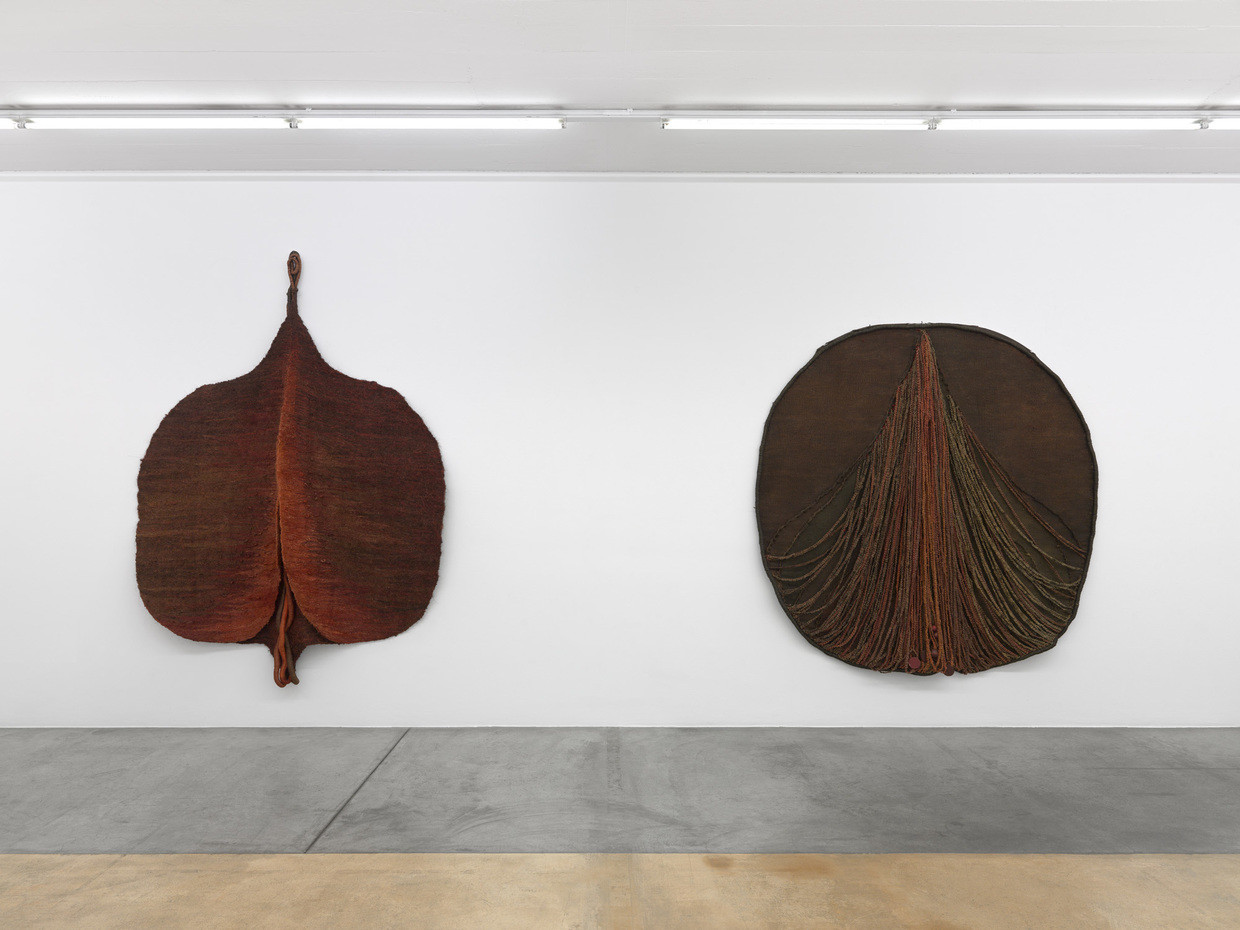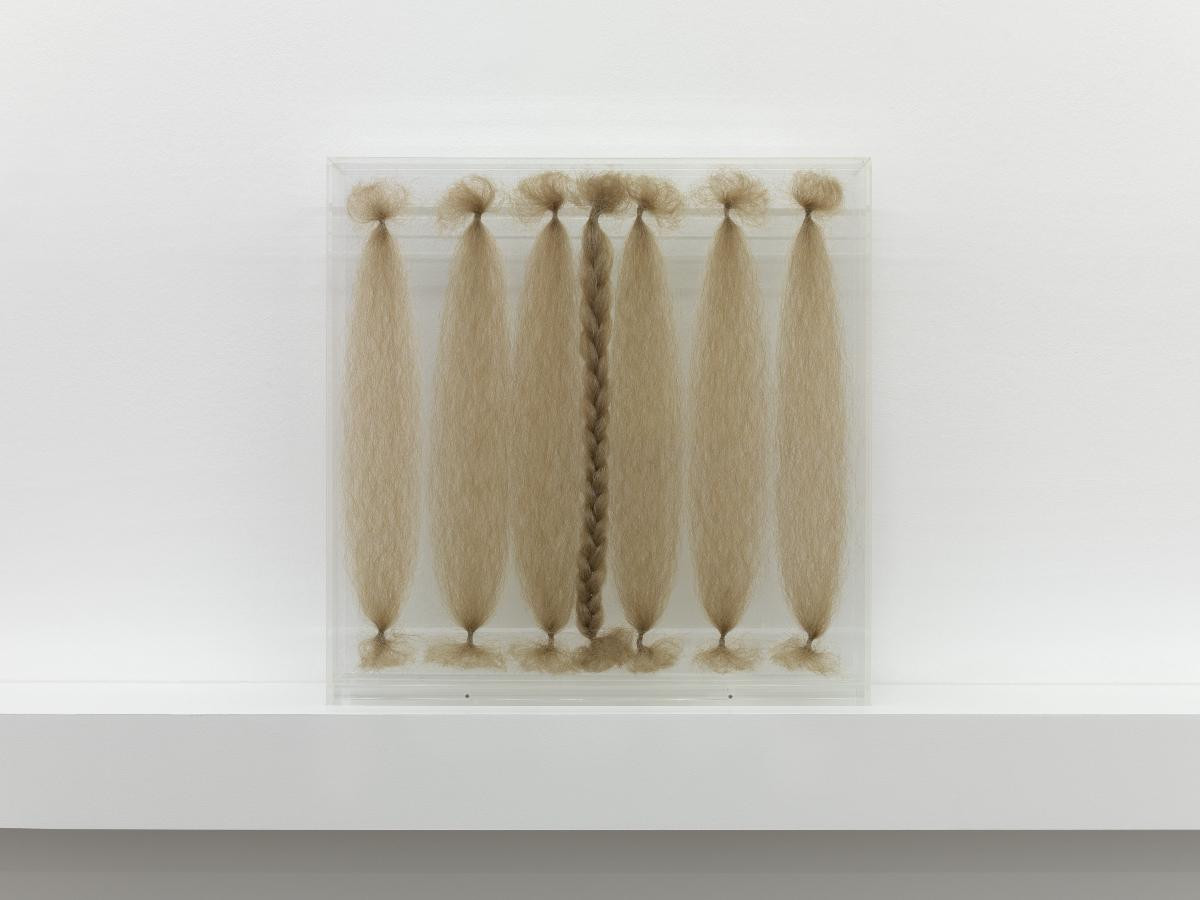Artistic textiles, an area of art that grew especially in the 1960s, was an emancipatory space for female artists. At that time, women in particular were intensely seeking opportunities for free creative expression. Many women artists initially working in textiles shifted their practice, abandoning weaving at some point in favour of, for example, monumental sculptural forms or other artistic endeavours. This was also the case with Klára Kuchta (b. 1941), a Hungarian artist whose work began with textile projects but then evolved to appear in other media. But in Kuchta’s case, this moment of transition, which took place in the mid-1970s, is particularly intriguing. Therefore, in this essay I would like to draw attention to the relationship between the artist’s early works (woven textile forms) and her later works using human hair. Although the change in her work appears to assume a completely new formal quality (from three-dimensional woven forms to conceptual activities, photography and video recordings), I would view it not as a radical change, but as an evolution and deepening of the issues that occupied her, for which she chose a language that was timely and appropriate at the given moment. This led to a striking result in her transition from woven forms to her own image, which became very strongly present in her work, a recognizable phenomenon across a broad group of women artists originating from the “new textile school”.
To understand what contemporary artistic weaving meant for women in the 1950s and 60s, we must address holistically the context in which it arose. Despite the equality formally provided by artistic institutions (equal access to artistic education for all), many women still suffered the repercussions of restrictions in force in art academies as far back as the 19th or early 20th century. This was manifest, among other things, in inequalities in the hiring of women and men in these schools, or in the refusal to entrust women with creation of sculptures in the public space or other official art commissions to the same extent as men. That is why artistic textiles, generally perceived as a prestigious medium, became a more accessible and autonomous medium, which women could resort to more freely and which they then expanded in various ways, transposing it, sometimes radically, and through which they discovered new spaces for art. This “new school” of textile art was a global movement, but it took root particularly intensely in the countries of the Eastern Bloc at that time in Europe, where it played a special role. Traditionally, it was associated with the decorative arts, thanks to which, although at that time it became a field of far-reaching experimentation, it was less subject to censorship and not subjected to the same pressures as painting or sculpture. Guided by intuition, or relying on their observations of the artistic community, they were seeking a place for themselves free at least to some extent from the overbearing weight of precursors, introduced for example by avant-garde artists, and generally less subordinated to the male narrative. As Kata Balázs explains how women’s narratives about femininity took shape within the framework of “fibre art”: “This wave of ‘women’s art’ articulated its identity by reaffirming biological sex and validating the female bodily experience. Textiles – and the knowledge that any material can be transformed into fibre, and thus function as a textile – along with the act of hanging the artwork, were seen as meaningful elements in this context. ‘Masculine’ minimalism was diffused through the introduction of ‘feminine’ qualities in the works of such artists as Eva Hesse. Hannah Wilke and Judy Chicago should also be mentioned here; both captured women’s experience by representing female genitalia as their explicit ‘feminine motif’. Magdalena Abakanowicz’s early Abakans (Abakany), the Swiss-Hungarian Klára Kuchta’s sisal works from the first half of the seventies, or Ilona Keserü’s Tangle (Gubanc) works can be included in this phenomenon.”1 It should be added that the female weaving artists from the Eastern Bloc generally resisted the classification of their activity as feminist art, and the female narrative, threads, motifs and themes that we read in their works today remained unspoken at the time. The forms they proposed were capacious, and could just as well be considered woven abstraction. In this sense, the phenomenon of Klára Kuchta’s work consisted in a gradual focus, in increasingly clear form, on femininity.
Kuchta received her artistic education in Budapest. She studied at the Hungarian University of Arts and Design (now the Moholy-Nagy University of Art and Design). But her path to an education was not easy. From early childhood, she faced many difficulties. She was born into a Hungarian intelligentsia family with Polish roots in the town of Rozsnyó (now Rožňava, Slovakia, some 70 kilometres from Košice). When Klára was born there, the town had belonged to Hungary for several years, having previously belonged to Czechoslovakia.2 Her wartime childhood became even more complicated in 1945, when Rozsnyó was again separated from Hungarian territory. Although Hungarians made up the majority of the city’s population, they began to be treated by the Czechoslovakian administration and their neighbours as an undesirable social element under the Beneš decrees. The discrimination that Kuchta and her family experienced at that time was unfortunately only a prelude to what happened to them after their forced move to Hungary. Driven out of their hometown in cattle cars, they settled in the suburbs of Budapest and for the next few years had to struggle with systemic economic oppression. Her father, as a representative of the pre-war Hungarian intelligentsia, could not find permanent employment. I mention this episode in the artist’s biography because it was one of the events that shaped her, strengthening her determination and need to create. The girl’s alienation at school was certainly also formative.3 The regime in Hungary, especially under the leadership of Mátyás Rákosi (1946-1953), was characterized by a policy of brutal repression against “class enemies”, including Kuchta’s family. This resulted in social isolation, as well as the need for Klára to put more effort into her studies than her peers did, because to get a better grade she had to work harder than others and find coping mechanisms. This remained with her during her university studies, when, as she recalls, she was totally focused on her work – and when “others had to prepare 90 sketches at the end of the semester, I made 150.”4
Her interest in art arose in a natural way. Although her family had been in financial difficulty for many years, her parents made sure that the children – Klára and her brother Nándor – received a proper education, so whenever possible they took the children to museums in Budapest. As a teenager, Kuchta met Noémi Ferenczy (1890-1957), one of the most recognized Hungarian women artists. Ferenczy’s position was unassailable even when the idiom of Real Socialism was imposed on Hungarian art. From 1950 on, Ferenczy was employed as a professor at the Hungarian University of Of Applied Arts, where Kuchta would later study. It was Ferenczy who transformed tapestry into monumental art. She wove her own forms, encouraging students to do the same. Although Ferenczy died before Kuchta began her studies, they met in Ferenczy’s studio. This outstanding weaver did not devote much time to Kuchta, but it was Ferenczy’s works which the girl saw in her studio that inspired Kuchta to take up textile art.
Because the children of the pre-war intelligentsia in Hungary could not apply to university at that time without first taking up a job for several years, Kuchta started working for the Corporation of Applied Art (Iparművészeti Vállalat) that was in the basement at the same building where Museum of Applied Arts in Budapest was located. She performed simple manual tasks there, such as assisting the weavers in the ateliers, by handling and setting up the spools. but it gave her the opportunity to thoroughly absorb the museum’s collection, including antique looms. After starting her studies, she was primarily focused on her work, doing more than was required of her but trying not to stand out in any way. As she recalls, she was very well aware that to be able to create in the future, she needed a diploma from the school, whose curriculum at that time was rather conservative. Fearing expulsion from school under any pretext, Klára Kuchta postponed her artistic ideas “for later”. As she says, concepts for creating three-dimensional textiles appeared to her during her studies, but she decided not to implement them until after graduation.





